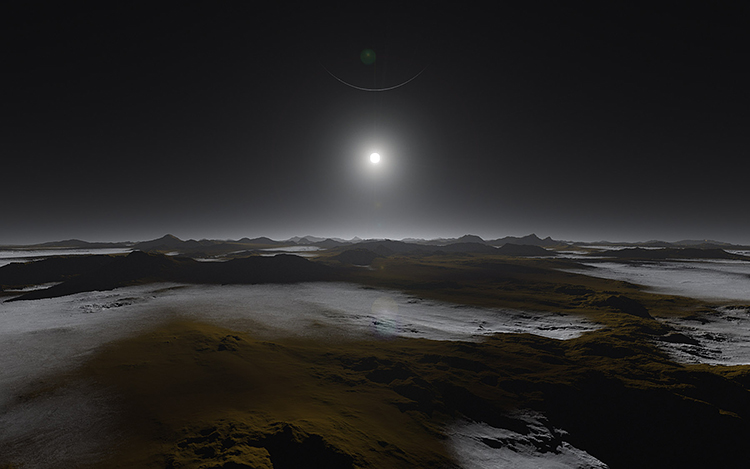
As has been discussed extensively now on AmericaSpace, New Horizons has revealed Pluto to be a place unlike any other in the Solar System, with vast plains and glaciers of nitrogen ice, tall mountains of solid water ice capped with methane snow, layers of haze in its atmosphere, and perhaps an ocean of water below the surface. Now, there is additional evidence that Pluto once had rivers and lakes of liquid nitrogen on its surface, during times when the atmosphere was thicker than it is now. Just when you think Pluto can’t get any more bizarre, it does.
The new findings were presented yesterday at the Lunar and Planetary Science Conference in The Woodlands, Texas. There is yet more evidence that Pluto has been, and in many ways still is, a very active world, a welcome surprise for planetary scientists. Data from the New Horizons spacecraft, which flew past Pluto and its moons last July, was used to model how the dwarf planet’s climate and atmospheric pressure have changed over time. The results indicate that there have been periods when the atmosphere was thick enough for nitrogen to remain liquid on the surface. Currently, nitrogen is only in ice form on Pluto’s surface, along with other ices such as methane, carbon monoxide, and water.
“Liquids may have existed on the surface of Pluto in the past,” said mission leader Alan Stern.


Mission scientists have spotted what appear to be ancient riverbeds and lakes on Pluto. The possible riverbeds look a lot like ones on Earth or Mars, but even during Pluto’s relatively warmer periods the temperatures would have been far too cold for water, but nitrogen becomes liquid at those temperatures. There is even what appears to be a frozen lake, which at one time was liquid but now is frozen solid.
As Stern mentioned in New Scientist: “It’s very smooth, as if a liquid has frozen across one height. It’s hard to come up with an alternate model that would explain that morphology.”
The idea of nitrogen rivers and lakes is bizarre by earthly standards, but perhaps not so much for the Solar System as a whole. Saturn’s moon Titan has rain, rivers, lakes, and seas of liquid methane today, as studied by the Cassini spacecraft. Like on Pluto, they mimic processes on Earth, but their composition is entirely different.

It was also noted at the conference that most of Pluto is “tropical.” That may seem like a very weird way to describe Pluto since it is so extremely cold there, but as team member Richard Binzel of the Massachusetts Institute of Technology explained, Pluto has a wild 120 degree tilt, meaning that its “tropical zone” is spread out over most of the dwarf planet instead of just being around the equator.
That’s tropical in the Plutonian sense, but still far colder than any place on Earth.
Pluto’s arctic zones extend much farther down, actually crossing into the tropics, meaning that some regions are both tropical and arctic. “There is no analogue to that here on Earth,” said Binzel.
Due to Pluto’s axis changing over time, it is estimated that there was a climate extreme about 800,000 years ago, when the axis reached 103 degrees. The arctic region extended to near the equator, while the tropics almost reached the poles. This helps to explain the odd dark region around Pluto’s equator, where there is no ice buildup; it is the only region that is always tropical and never arctic.
It is even possible that at times Pluto’s atmosphere has been thicker than that of Mars, a surprising finding since Pluto is smaller than Mars and its current atmosphere is thinner.
“This really changes your view of this little planet and how it operates,” said Stern.
There is surface liquid that has been seen on Pluto right now, but studies by the mission team have also suggested there could be subsurface lakes of liquid nitrogen. It is calculated that there might be enough pressure below the nitrogen glaciers for pockets of liquid to still exist, as also happens with water ice glaciers on Earth, at depths of at least 0.6 miles (1 kilometer).
“You could have a liquid state at the base,” said Orkan Umurhan of NASA’s Ames Research Center in California.
Even farther down, it is now thought that there is likely a subsurface ocean of water, not too different from those found on icy moons such as Europa, Enceladus, Titan, and Ganymede.
It’s another finding which at first doesn’t seem to make much sense, since Pluto is so extremely cold and far from the Sun. But scientists now think that radioactive elements and ammonia help to keep this deep layer of water liquid.
As Stern mentioned in Discovery News, “We now have half a dozen worlds, like (Saturn’s moon) Enceladus, (Jupiter’s moons) Europa and Ganymede, and now Pluto, that seem to have oceans in their interiors.”
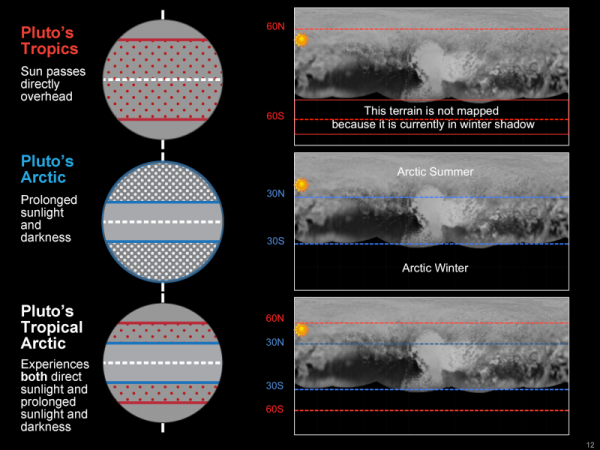
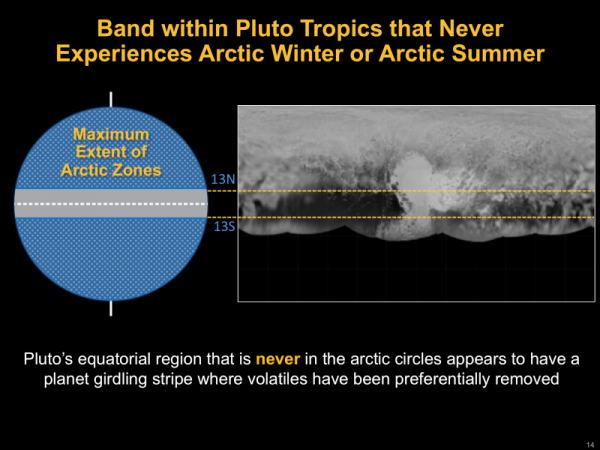
As William McKinnon at Washington University in St. Louis also noted in DN: “All we can say is that we think that Pluto has an ocean and we think that this ocean has survived to the present day. It’s the kind of ocean that is deep inside the interior of Pluto, in total darkness. But, it would lie between a floating water ice shell and the rocky interior, so it would be in contact with rock. There would be a modest amount of heat leaking out.”
As for the possibility of some kind of life in that ocean, he added, “You certainly couldn’t rule it out, but anything about life on Pluto is simply speculation.”
As also recently reported, five new papers have just been published in Science outlining the many discoveries made so far about Pluto and its moons, thanks to the New Horizons flyby last July. Pluto is a bizarre little world, with nitrogen ice plains and glaciers, mountains of solid water ice, methane snow, possible cryovolcanoes, and five moons, four of which are very small, rotate rapidly, and have eccentric orbits. Pluto’s largest moon, Charon, has huge canyons, a lot of water ice, an odd “mountain in a moat,” and a reddish colored north polar cap.
Pluto is a fascinating world, unique from any other place in the Solar System.
“This is why we explore,” said Curt Niebur, New Horizons program scientist at NASA Headquarters in Washington. “The many discoveries from New Horizons represent the best of humankind and inspire us to continue the journey of exploration to the Solar System and beyond.”
Follow our New Horizons mission page for regular updates.
Be sure to “Like” AmericaSpace on Facebook and follow us on Twitter: @AmericaSpace
Missions » New Horizons »




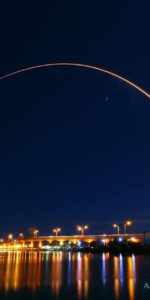
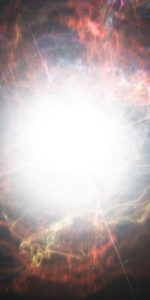
I have a question regarding the first illustration – an “artist’s conception of Pluto’s surface, with the distant Sun and largest moon Charon in the sky”. I understand that as an artist’s conception, the illustration allows certain artistic freedom, but as this picture is referred to by NASA, I assume it is largely based on scientific understanding of what Pluto surface actually looks like. Hence the question: where is the Sun and where is Charon on the picture? If the Sun is the bright disc in the center, it would contradict the facts, as based on the distance from Pluto, the Sun should appear as a very bright dot from Pluto’s surface, not even half as big as this. If it is Charon, it contradicts the facts even more, because first of all, it cannot appear sunlit and be on the same side of the skies as the Sun, and also, of course, it cannot be sunlit as bright as this. So I assume the artist depicted the brightest object as the Sun and Charon is the dim sphere in the upper part of the picture. Then, it means the artist has got the visible size of the Sun wrong.
Yes, it is the sun. Charon is the thin crescent above it. Yes, the artist (Dr. Alex Parker, a planetary astronomer) has taken a bit of liberty with the size of the Sun. Artistic renderings are not, and should not be expected to be 100% accurate in all regards. Most people do not understand that the Sun is merely a very bright star at the distance of Pluto (though Dr. Alex Parker certainly does), and would expect something more along the lines of what is seen in this image. In my opinion, the image looks better this way, certainly it is more dramatic.